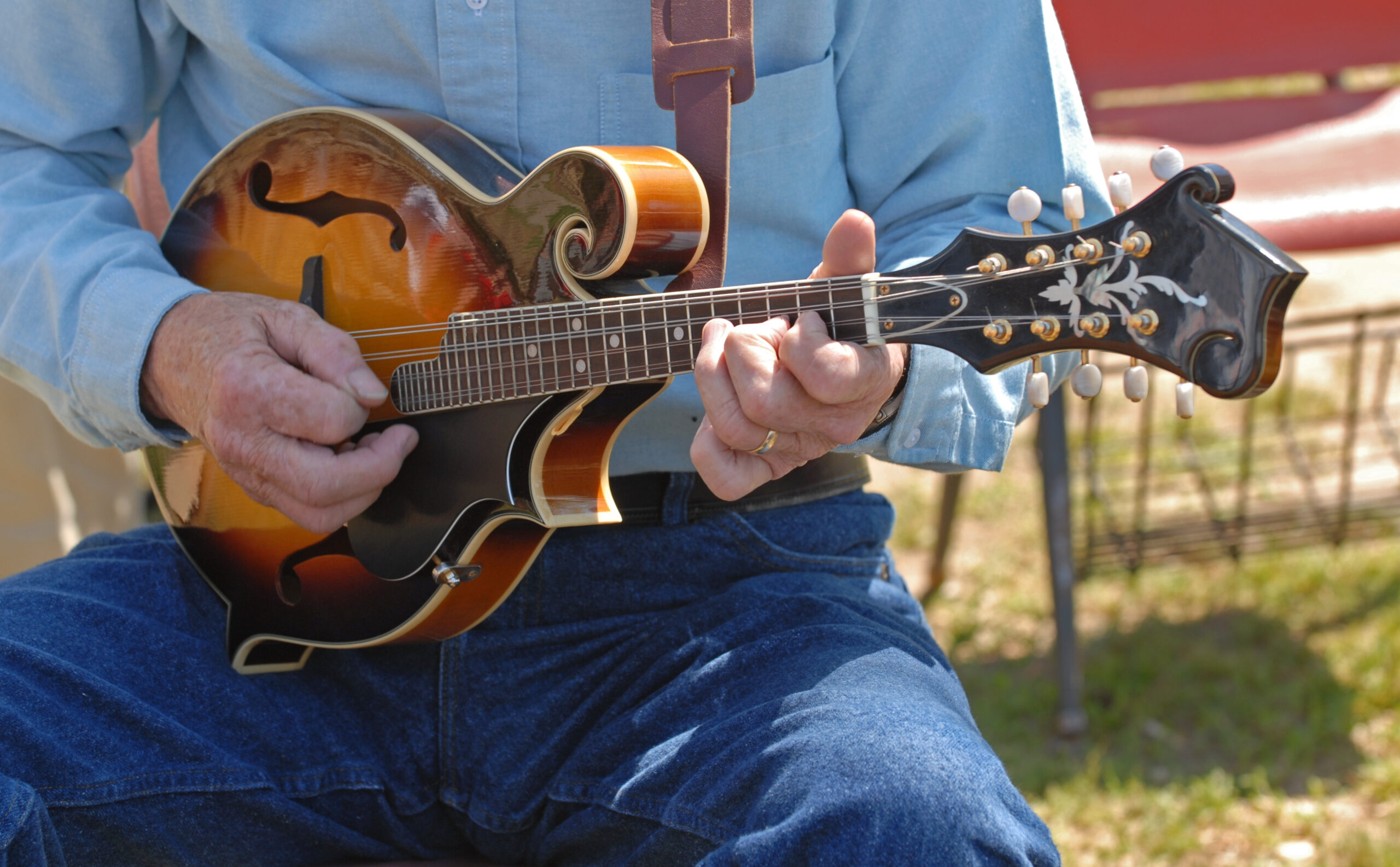Here’s what communicators can learn from pickin’ the brains of bluegrass
With the right players, a solid stage and a lot of practice, comms can hone the art of acoustic messaging.

Jumping up from the hallowed, wooden bench of Nashville’s Ryman Auditorium, the lingering reverberations of mandolin strings from the Punch Brothers’ final chord struck deeper than the palpitations of my heart.
Despite standing in a hall of 2,360 other music lovers, it still felt like I was alone with the music.
At the time, I chalked that memory up to it simply being one of the most powerful concerts I’d ever attended. But as a communicator, I’ve come to realize that there is much to learn from the art of bluegrass music, and that we, too, can create intimate connections with individual audience members in a crowd.
Bluegrass music emerged in 1940s Appalachia as a synthesis of many cultures and backgrounds The genre is a fantastic example of the beauty that can come from embracing inclusivity and creating an exchange of diverse traditions and experiences.
The genre typically features acoustic, stringed instruments (think guitar, mandolin, banjo, fiddle, stand-up bass) playing high energy, instrumental improvisations, unique harmonies and complex chords. Famous bluegrass musicians include Bill Monroe, Ricky Skaggs and Alison Krauss, and “newgrass” has emerged over the last couple of decades with bands like Nickel Creek, Yonder Mountain String Band, Sierra Hull and my personal favorite, Punch Brothers. Other stars including Dolly Parton, Chris Stapleton and even Steve Martin have found some of their notable successes in bluegrass music.
So, why does any of this matter to us? What can communicators learn from the greats of bluegrass?
1. Build your band
Good bluegrass music is all about having the right mix of skilled people who know how to listen to and communicate with each other. The best bands take time to understand their audience, zero in on each member’s strengths and, throughout a performance, empower every musician to take the lead. The very best bands have become so in-sync that they can anticipate each other’s actions — if someone breaks a string, a fellow bandmate can step in at a beat’s notice to keep the music going.
Much like in a bluegrass group, teamwork is paramount when carrying out a communications strategy. It’s all about having talented, passionate people who know how to listen, understand their audience and use their strengths to build effective messaging that resonates with others. Sometimes this means serving as the melody and being out front with the message, other times it means supporting as the harmony that elevates the story to a new dimension. In tough spots, it also being there to help keep things going if a string breaks in your team.
Take a moment to think about your band of fellow communicators. What are some things you can do to become more in sync, better anticipate what’s next and build a cohesive team that connects?
2. Sing (or strum) your story
Bluegrass songs share some of the most authentic and memorable stories, and those who perform them are the storytellers. Often, these songs come from familiar experiences that draw in the listener. In a bluegrass vocal, the melody is crisp and clear and is usually supported by unique or complex harmonies. One of the most distinctive identifiers of great bluegrass music, however, is when the story speaks without ever saying a word – commonly called an instrumental.
A great example of an effective instrumental is Nickel Creek’s Elephant in the Corn. The musicians paint a vivid picture for the listener through their selection of notes, accents and musical phrases, a range of dynamics and intentional deviations of tempo. If the listener closes their eyes, it is easy to visualize the story they are telling, and when it ends, you want more.
As communicators, you already know that we are also storytellers. We want our stories and our messages to be authentic, clear and memorable. We want to connect with people in a way that allows them to put themselves in the narrative and sing our song with us. In the same spirit of bluegrass, we can accomplish this in a variety of ways – whether being intentional about the words we choose, the examples we share or the visuals we create. In the end, we want to leave our audience wanting more!
Some of the best communicators let their work speak for itself. Many times we’re the ghostwriters, the behind-the-scenes team making it happen without having a byline or being in the spotlight. I want to encourage you to take one minute to reflect — think about the stories you are sharing, the power of your messages, the impact you are having on your organization, your customers, your communities and be proud — you are instrumental.
3. Set the stage
I’ve never been to a bluegrass concert in a stadium or a giant arena. Some of the best pickin’ I’ve ever heard was around a small picnic table behind a music barn on the outskirts of my rural Georgia hometown. Some groups even do in-home sessions to truly build a meaningful space to make the music matter.
Like bluegrass musicians, we know that creating the right setting for connections and conversations to happen is essential. Now, with people in a wider variety of workplace settings (on-site, hybrid, remote), there are even more opportunities to find the right venue for your message. Sometimes the widespread, large format messages are necessary and right, but other stories require a more focused and personalized approach.
Think about the stories that resonate most with you – how are they delivered, who shares the message, how many people are in the space and where are you in the mix? Let that experience help you shape the venue for your next communication.
4. Practice makes perfect
As an amateur mandolin player and vocalist, I have looked at the extraordinary talent of musicians like Ricky Skaggs, Chris Thile and Dolly Parton on many occasions and thought, “It comes so naturally to them. I could never do that.”
Don’t “fret,” as this illusion of natural talent is just that —an illusion shaped by decades of hard work. The man that inspired and encouraged me to play mandolin was self-taught. He traveled frequently for business and spent his evenings in a hotel practicing his chords and riffs until his fingers were cracked and sore — then he would practice some more. When I saw him on stage, I was captivated by the ease with which he perfectly picked his notes, solos and trills, and it seemed like he created this magic on the spot. It wasn’t some enchanted secret. Yes, he had talent, but what I saw was the result of practice, of learning from his mistakes and from his continuous quest to be better every time he took the stage.
When we communicate, we want to create that illusion, too, capturing attention with our words and our message in a way that seems effortless.
May our shared successes continue to be the result of ongoing practice (maybe even with some cracked and sore fingers), learning from our mistakes and our relentless quest to be better storytellers every time we pick up our instrument.
Ashley Bush is the director of communications and giving back at Southwire.






